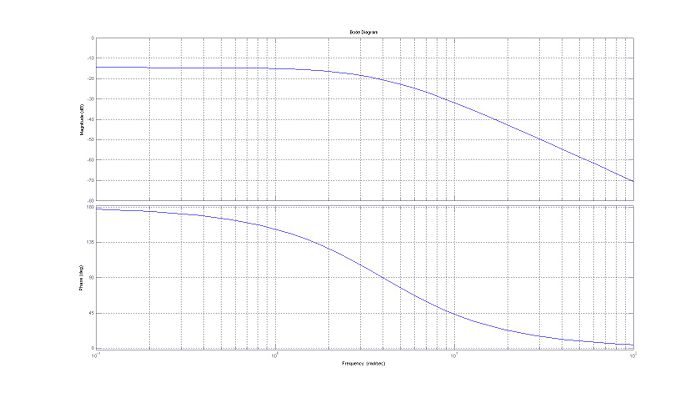Laplace transforms: Critically Damped Motion: Difference between revisions
Jump to navigation
Jump to search
Mark.bernet (talk | contribs) |
Mark.bernet (talk | contribs) |
||
| (2 intermediate revisions by the same user not shown) | |||
| Line 17: | Line 17: | ||
<math>\text {k=4}\,</math> |
<math>\text {k=4}\,</math> |
||
<math>\text {C= |
<math>\text {C=2}\,</math> |
||
<math>\text {x(0)=0}\,</math> |
<math>\text {x(0)=0}\,</math> |
||
| Line 167: | Line 167: | ||
=State Space= |
=State Space= |
||
<math>\text {Using state equatons is just another way to solve a system modeled by an ODE }\,</math> |
|||
<math>\text {First we need to add an applied force so u(t)=2N }\,</math> |
|||
<math>m=\frac{8}{32}=\frac1 4 slugs</math> |
|||
<math>\text {k=4}\,</math> |
|||
<math>\text {C=2}\,</math> |
|||
<math>\text {x(0)=0}\,</math> |
|||
<math>\dot{x}(0)=-3</math> |
|||
<math>\ddot{x}(0)=0</math> |
|||
<math>\begin{bmatrix} \dot{x} \\ \ddot{x} \end{bmatrix}=\begin{bmatrix} 0 & 1 \\ -k/m & -C/m \end{bmatrix} \begin{bmatrix} x \\ \dot{x} \end{bmatrix} + \begin{bmatrix} 0 \\ 1/m \end{bmatrix}u(t)</math> |
|||
--- |
--- |
||
Latest revision as of 16:58, 18 November 2009
Using the Laplace Transform to solve a spring mass system that is critically damped
Problem Statement
An 8 pound weight is attached to a spring with a spring constant k of 4 lb/ft. The spring is stretched 2 ft and rests at its equilibrium position. It is then released from rest with an initial upward velocity of 3 ft/s. The system contains a damping force of 2 times the initial velocity.
Solution
Things we know
Solving the problem
Apply the Initial and Final Value Theorems to find the initial and final values
- Initial Value Theorem
- Final Value Theorem
Applying this to our problem
Bode Plot of the transfer function
Transfer Function
Bode Plot
==Break Points and Asymptotes==
Convolution
State Space
---
Written By: Mark Bernet
Error Checked By: Greg Peterson













![{\displaystyle {\mathcal {L}}[{\frac {d^{2}x}{dt^{2}}}+8{\frac {dx}{dt}}+16x]}](https://wikimedia.org/api/rest_v1/media/math/render/svg/9223069732914f355e25cc2ee4ac7c6e4b58e571)






![{\displaystyle {\mathcal {L}}^{-1}[-{\frac {3}{(s+4)^{2}}}]}](https://wikimedia.org/api/rest_v1/media/math/render/svg/1dfc431d35b72b5580c7bbfb1bd441dfdfcb2394)




































